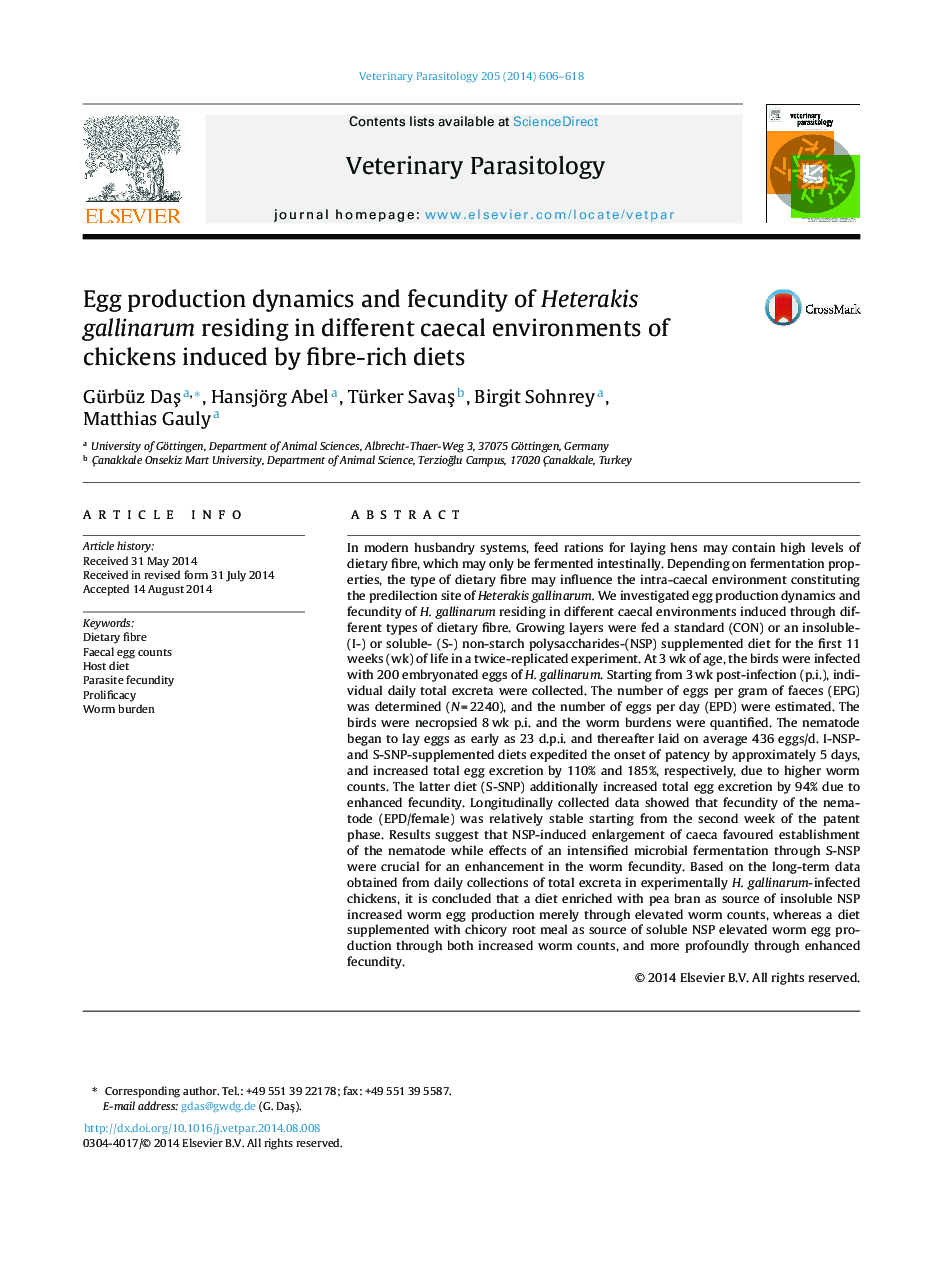| کد مقاله | کد نشریه | سال انتشار | مقاله انگلیسی | نسخه تمام متن |
|---|---|---|---|---|
| 5803078 | 1555680 | 2014 | 13 صفحه PDF | دانلود رایگان |

- Heterakis gallinarum lays on average 436 eggs/d.
- Per capita worm fecundity is fairly stable by the second week of patency.
- Non-starch polysaccharides-(NSP) supplemented diets shorten pre-patent period.
- NSP diets increase total egg production by 110-185% due to elevated worm counts.
- Highly fermentable NSP enhances worm fecundity by 94%.
In modern husbandry systems, feed rations for laying hens may contain high levels of dietary fibre, which may only be fermented intestinally. Depending on fermentation properties, the type of dietary fibre may influence the intra-caecal environment constituting the predilection site of Heterakis gallinarum. We investigated egg production dynamics and fecundity of H. gallinarum residing in different caecal environments induced through different types of dietary fibre. Growing layers were fed a standard (CON) or an insoluble- (I-) or soluble- (S-) non-starch polysaccharides-(NSP) supplemented diet for the first 11 weeks (wk) of life in a twice-replicated experiment. At 3Â wk of age, the birds were infected with 200 embryonated eggs of H. gallinarum. Starting from 3Â wk post-infection (p.i.), individual daily total excreta were collected. The number of eggs per gram of faeces (EPG) was determined (NÂ =Â 2240), and the number of eggs per day (EPD) were estimated. The birds were necropsied 8Â wk p.i. and the worm burdens were quantified. The nematode began to lay eggs as early as 23 d.p.i. and thereafter laid on average 436 eggs/d. I-NSP- and S-SNP-supplemented diets expedited the onset of patency by approximately 5 days, and increased total egg excretion by 110% and 185%, respectively, due to higher worm counts. The latter diet (S-SNP) additionally increased total egg excretion by 94% due to enhanced fecundity. Longitudinally collected data showed that fecundity of the nematode (EPD/female) was relatively stable starting from the second week of the patent phase. Results suggest that NSP-induced enlargement of caeca favoured establishment of the nematode while effects of an intensified microbial fermentation through S-NSP were crucial for an enhancement in the worm fecundity. Based on the long-term data obtained from daily collections of total excreta in experimentally H. gallinarum-infected chickens, it is concluded that a diet enriched with pea bran as source of insoluble NSP increased worm egg production merely through elevated worm counts, whereas a diet supplemented with chicory root meal as source of soluble NSP elevated worm egg production through both increased worm counts, and more profoundly through enhanced fecundity.
Journal: Veterinary Parasitology - Volume 205, Issues 3â4, 15 October 2014, Pages 606-618